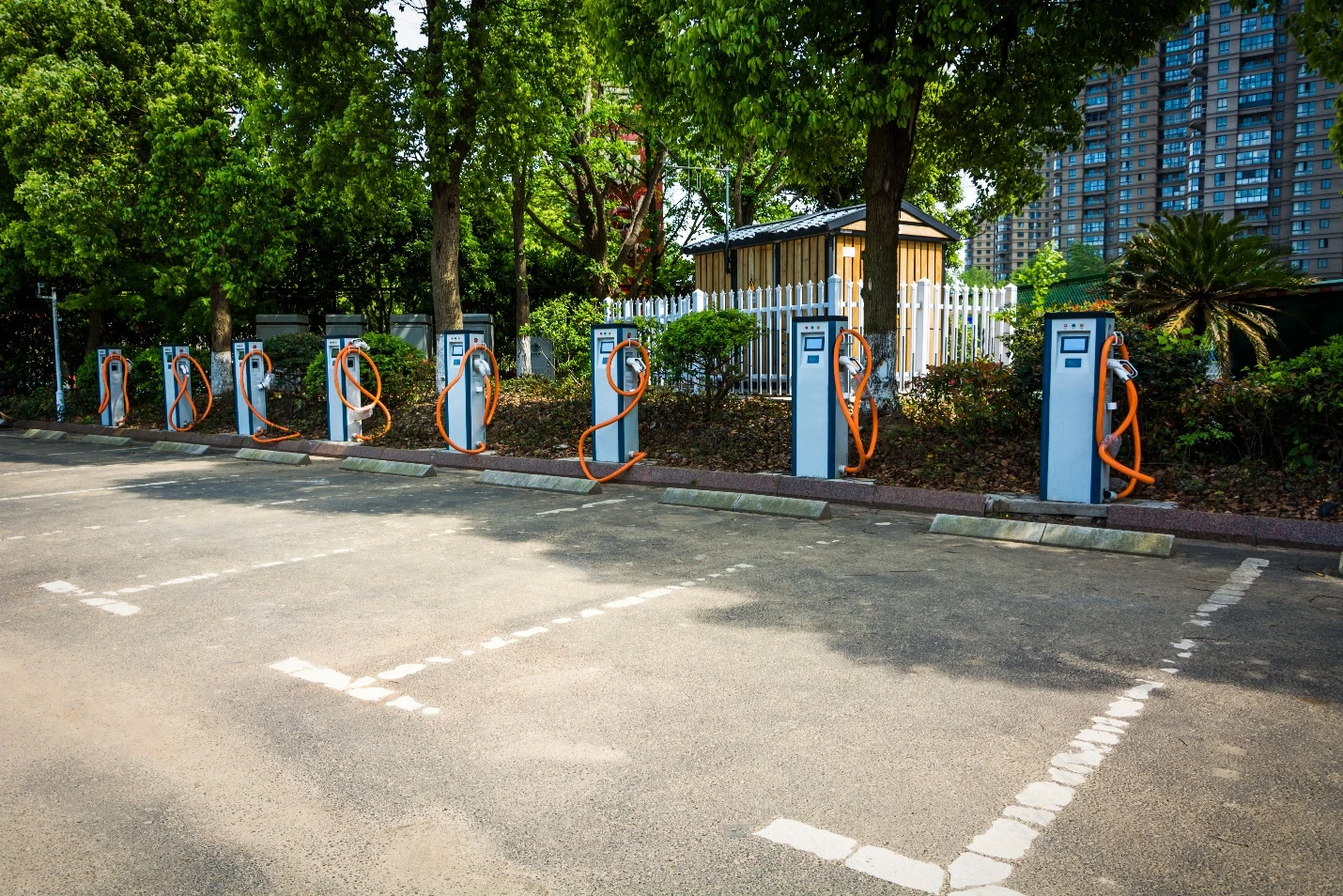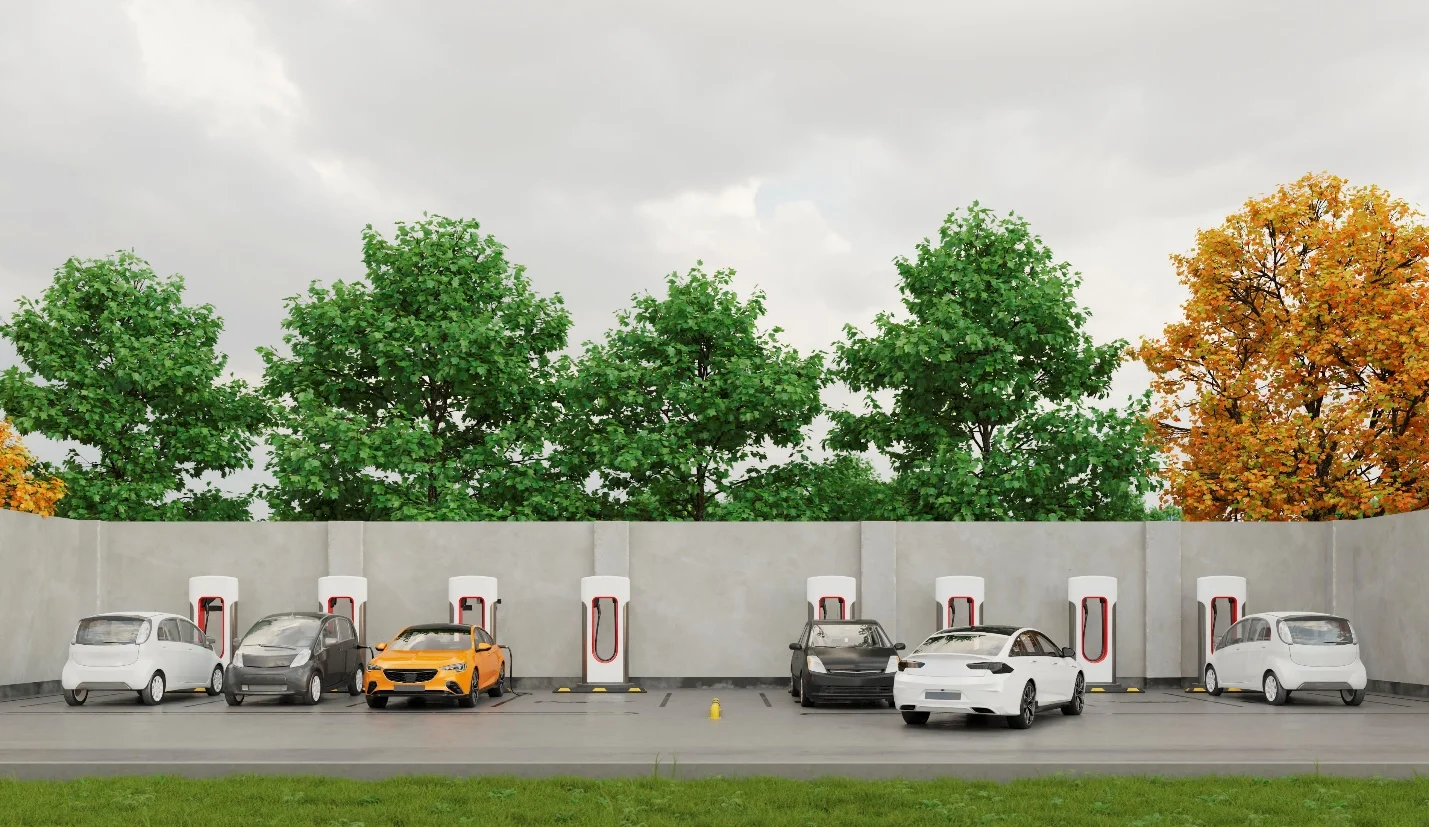Summary
The cost of installing electric vehicle chargers can be prohibitive. With the government suspending funding for charger installations, this article examines the future of EV charging infrastructure.
Table of Contents
Introduction
For a transition to a clean and modern electric future, the U.S needs more electric vehicles on the road and many more chargers too. The question is, what is it going to cost?
With the government suspending funding for critical electric vehicle infrastructure projects and investments, businesses will need new strategies, partners, and incentives to support the mass adoption of electric vehicles.
As the premier electric vehicle charging contractor in Los Angeles, Tercero Inc. experts examine the future of public EV charging station infrastructure costs and how they affect the charging ecosystem and EV adoption. We also discuss the role and responsibility of electric charging stations.
Whether you are an investor, EV charging enthusiast, or a station manager, this article will help you understand the changes to EV charging costs, new projections, and what it means for the future.
Understanding EV Charging Station Infrastructure Costs
Building an electric vehicle charging station involves planning, design, choosing a location, getting permits, installation, and ongoing maintenance. However, it is essential to note that none of them matter until you have determined the cost of the infrastructure.
EV charging station infrastructure costs depend on the type of charging station and location. There are three types of charging stations: Level 1, Level 2, and Level 3 (DC fast charging).
Level 1 charging stations are the slowest. They provide a 4-mile range per hour of charging. Level 2 chargers are faster. They provide 25 miles of range per hour of charging. Level 3 chargers are the fastest, providing up to 200 miles of range in just 30 minutes of charging.
The cost of each charging station increases the more powerful they are. So, Level 1 chargers are the cheapest, and Level 3, the most expensive.
The most significant cost associated with EV charging is the charging equipment itself. Level 1 chargers cost between $250 and $1,000. These chargers can be plugged into a standard wall socket. However, additional installation and labor costs, wiring, permitting, etc., can cost an extra $500 to $3,000.
Level 1 chargers are unsuitable for commercial purposes because of the slow and inefficient charging speed.
Level 2 chargers are faster and more expensive than Level 1. The cost of these charging stations depends on the manufacturer, additional features, installation, and model. Overall, the equipment alone can cost from $1,500 to $10,000.
In addition to the equipment cost, you should consider installation requirements such as running electrical wires to the charging station, labor and installation costs, permitting and compliance, and electrical panel upgrades. Overall, installation costs can range from $3,000 to $10,000.
Level 2 chargers are the most commonly used public electric vehicle charging stations. However, despite their relative speed, they may still be insufficient for companies with large fleets or locations requiring super-fast charging, like highways.
Level 3 (DC fast charging) chargers are the quickest and most expensive. These charging stations often involve extensive pre-installation work. You should upgrade your electrical panel, install additional safeguards, and invest in complex electrical management systems.
The cost of a Level 3 electric vehicle supply equipment (EVSE) starts from $25,000. But if you are looking for a charger with more advanced features, such as multiple ports or integrated energy storage, you will need a budget of $200,000+.
In addition to the charger’s cost, there are a lot of expenses associated with a Level 3 charger installation. These chargers require a high-voltage power supply and a specialized connection. Commercial electricians must be hired, and plans must be submitted to the local building authority to ensure the installation meets electrical safety standards.
After the installation, the station will be thoroughly inspected and tested to ensure it functions properly. Regular maintenance will also be scheduled to keep the station in peak operating performance. Installation costs on a DC fast charging station can cost between $25,000 and $100,000 per charger.
Public EV Charging Costs: What to Expect?

Public EV charging costs generally range from $1 to $5 per hour for Level 2 chargers, and $10 to $30 on Level 3 chargers. However, these costs are not fixed. They can vary according to location, charging network, and the type of charger used.
- Level 2 Chargers cost approximately $0.30 to $0.35 per kWh.
- Level 3 Chargers cost approximately $0.40 to $0.60 per kWh.
Some factors that can affect these costs include:
- Location: Charging costs depend on your region. Regions with high electricity tariffs will have higher costs, while those with low tariffs will enjoy lower charging costs.
- Charging Network: Different charging networks, such as Tesla Supercharger, EVgo, ChargePoint, Blink, etc., all have their pricing structures.
- Extra Fees: Some networks charge if your car remains plugged in after charging is complete. Others also offer subscription fees, which help lower charging costs.
Some tips to manage public charging costs include:
- Charge when rates are lower, usually when demand is not as high.
- Consider membership or subscription, as some charging stations offer their members or subscribers discounted rates.
- Avoid leaving your car plugged in longer than necessary to avoid idle charging fees.
The Role of Local Electric Charging Stations
Local electric charging stations support the transition to sustainable and clean transportation by providing convenient and accessible charging infrastructure. Some of their roles include:
- Reducing Range Anxiety for EV Owners: Public charging stations make electric vehicles more practical for daily and long-distance travel.
- Support Economic Growth: Local electric vehicle charging stations can stimulate economic growth by attracting EV drivers to local businesses and tourist destinations. The station also creates jobs in manufacturing, installation, maintenance and operations.
- Promoting Sustainability: Local charging stations are essential for transitioning to cleaner and more sustainable transportation options. They reduce reliance on gasoline, lowering emissions and the carbon footprint of the transport economy.
- Encouraging the Adoption of Electric Vehicles: Local charging stations reduce range anxiety. The ease of charging and relatively low costs help promote EV adoption.
Future Trends in Charging Infrastructure and Costs

Some future trends in EV charging station infrastructure costs include:
- Technological Advancements: As charging technology advances, charging equipment and installation costs will be affected. For instance, new high-speed chargers will require fewer electrical upgrades. And wireless chargers will no longer need physical connectors, potentially reducing equipment, installation, and maintenance costs.
- Manufacturing Scale: EV chargers are becoming cheaper due to mass production. Consequently, the installation cost will also reduce for public charging stations.
- Grid Integration Solutions: New approaches to grid integration can help control EV charging station infrastructure costs. The Vehicle-to-Grid (V2G) technology enables bidirectional power flow, creating revenue opportunities for compatible stations. Additionally, the battery storage integration reduces peak demand charges by 25 to 50%, significantly lowering operational costs for the station.
- Integration with Renewable Energy: Co-locating solar panels with battery storage is becoming a common trend in charging sites. While the initial installation cost is expensive, this approach can see operational costs drop significantly.
- Standardization: The standardization of EV chargers will allow for universal compatibility and facilitate easier charging for drivers regardless of their locations. This trend will also reduce the cost of manufacturing charging equipment which will also reduce overall equipment and installation costs.
Conclusion
Electric vehicle charging technology is developing rapidly, with significant costs, convenience, and sustainability implications. While the initial EV charging station infrastructure costs remain high, with innovative business models and the right approach to installation, you can improve affordability and support the mass adoption of electric vehicles.
At Tercero Inc., our experts understand EV charging station costs best. We can help you make informed decisions on installing your equipment and place your company on the path to success. Contact us today for more information on electric vehicle charging station infrastructure costs.
FAQs
As EV adoption increases, charging stations will also increase to satisfy the demand for safe, efficient, and accessible charging stations.
EV charging costs depend on the type of charger, location, and charging network. Level 2 chargers cost $0.30 to $0.35 per kWh, while Level 3 costs $0.40 to $0.60 per kWh.
EV infrastructure is the structures, machinery, and equipment necessary to support an electric vehicle. This includes battery chargers and charging stations.
ChargePoint is the largest and most open electric vehicle (EV) charging network in the U.S, with over 20,000 charging stations.
With regular maintenance and proper handling, EV chargers have a long lifespan and withstand heavy usage and extreme weather conditions.
EV charging station operation costs include service and maintenance, electricity bills, insurance, etc.
Level 1, Level 2, and Level 3 (DC fast charging) are the three charging stations available.
The cost of the equipment, installation, capacity of the electrical grid, location, and operation costs are some barriers that affect the expansion of EV charging stations.
Most EV batteries last 15 to 20 years, with an average degradation rate of about 1.8 per year under moderate conditions.
The common causes of charger failure are a lack of maintenance, poor servicing, and incompatibility with the vehicle.

